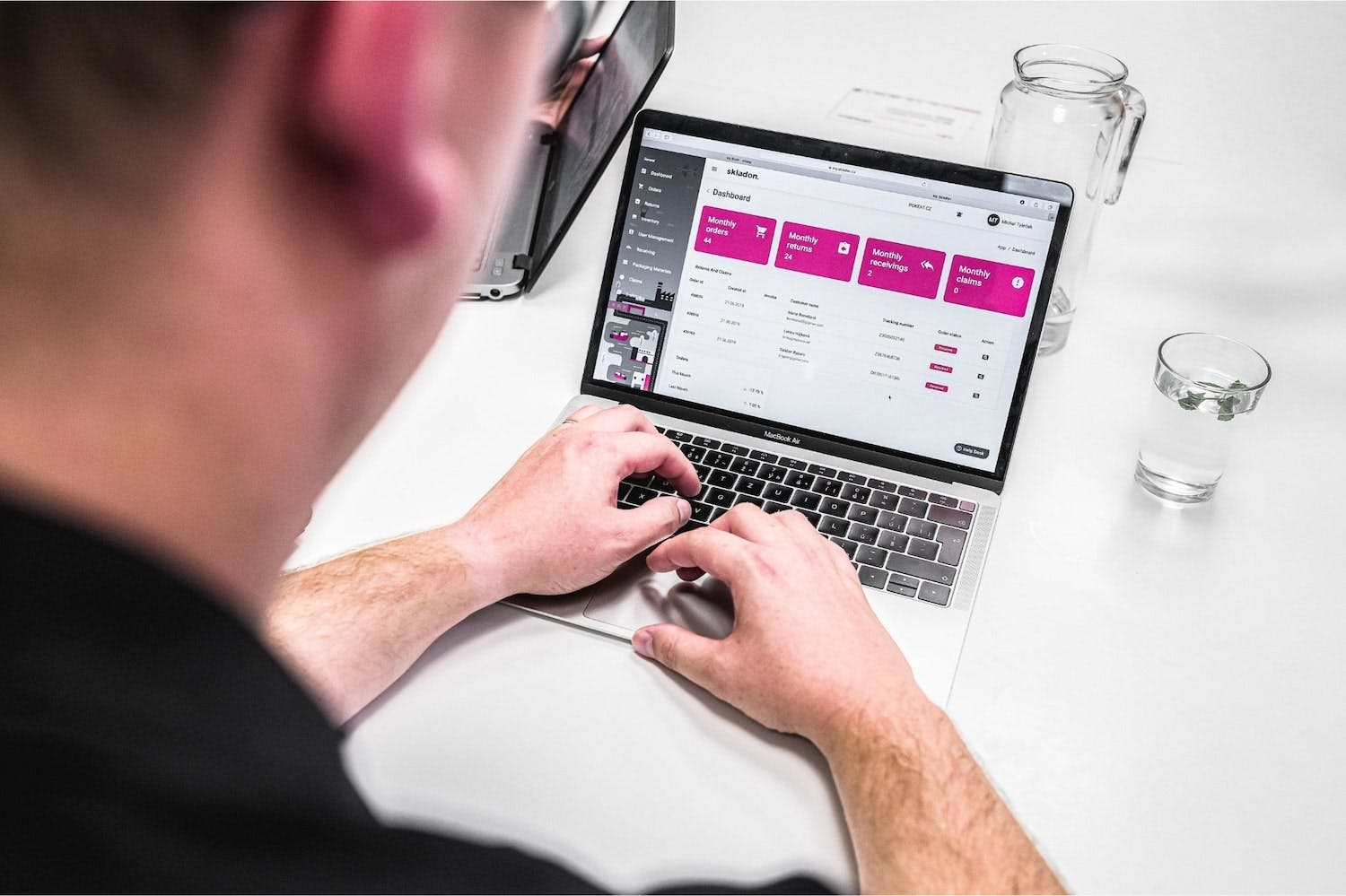Customer Lifetime Value (CLV): How to calculate, measure and increase it


It is well known that it is more financially advantageous to retain existing customers than to acquire new ones. That’s why customer lifetime value (CLV) is an important metric and a great way to set company strategies, goals, budgets, improve processes, increase profits and ultimately the overall business growth of an e-commerce store.
Working with CLV is the hallmark of any modern e-commerce store. That’s why it’s crucial that your team has coded the concept and learned how to use it effectively.
Do you know the value of your customers?
A bit of statistics at the beginning
Peter Drucker, a well-known management consultant, once said: “What gets measured gets managed.” With this statement, we will build on the first sentence of this article and contrast the values of existing and new customers.
According to YotPo, working with existing customers is undervalued. Yet their value represents a significant portion of e-commerce revenue. Therefore, a thorough work and analysis of their return rate is in order. The following figures underline all this:
- Returning customers make up only 15% of all your online shoppers
- However, returning customers account for 1/3 of all online shopping revenue
- The value of a returning customer’s purchase is on average 3 times higher than a one-off purchase
Unfortunately, allocating the cost of acquiring new customers is more exciting to a large portion of e-shops than the cost of nurturing and creating long-term relationships with existing customers. This customer flow setup can also be described in an abstract way: e-shops are obsessed with clogging the entrance while the exit remains free-flowing.
What is Customer Lifetime Value (CLV)?
Customer Lifetime Value (CLV) is the total revenue you receive from a customer over the lifetime of their relationship with your e-shop.
TIP: Do you want to know the profitability of a specific type of customer or the growth potential of your e-shop in the long term? Subtract from CLV the complete average cost associated with that type of customer, such as the cost of acquiring them, order clearance, shipping, customer care, and more. Find out which customer segments are most profitable for your business and adjust your corporate strategies accordingly.
How to calculate Customer Lifetime Value?
CLV is a popular financial metric due to the simplicity of its calculation. To calculate customer lifetime value, use the following formula:
CLV = average order price* x average number of orders** x average customer lifetime***
* when determining the average price of an order, we recommend working with a minimum of 3 months, ideally longer
** per 1 year
*** information about how long the customer has been shopping on your e-shop (in number of years)
Example of CLV calculation: Jimmy Gray shopped at your e-shop twice a month. The average price of his order was €20. He has been shopping on your e-shop for 5 years, but last month he switched to your competitor due to repeated errors in the content of shipments. What is his lifetime value?
CLV = €20 x 24 purchases per year x 5 years = €2 400
The lifetime value in the case of Jimmy Gray is €2 400.
To calculate your customers’ CLV, use our customer service KPI calculator. The calculator can be downloaded here.
DOWNLOAD THE CUSTOMER SERVICE CALCULATOR HERE
But how to work with this number?
TIP: Each variable in the formula acts as a lever. A change in one can significantly affect the other. For example, if you increase the price of your products, the average order value will increase. However, as a result, some of your customers will likely leave for cheaper competitors, reducing the average number of orders per year.
Why working with Customer Lifetime Value is important?
1. What you don’t (re)measure, you don’t improve
Once you start measuring the lifetime value of your customers and have a good understanding of the variables, you can start testing and finding more effective tactics around pricing, channel usage, marketing and more to continually reduce costs and increase profits for your target customer groups.
2. Easier acquisition cost decisions
When you know how much you make on average on your typical customer, you can adjust your customer acquisition costs to maximize profitability for the right customer segments.
3. Better planning
The more accurately you measure the lifetime value of your customers, the more accurate your future decisions about inventory, staffing, production capacity and other costs will be. For example, you will avoid problems associated with over-supplying your goods or, conversely, problems with selling out and keeping up with demand or competition.
Benefits of measuring Customer Lifetime Value
1. Extending customer retention
One of the main objectives of measuring CLV is to try to retain existing customers as much as possible and to minimize their defection to competitors. Tracking relevant data together with properly set customer segmentation usually leads to identifying the ideal customer profile and using effective tactics, not just marketing.
2. Increase the number of repeat purchases
By measuring CLV, you are determining the average number of visits your customers make to your e-shop. Be it annually or over its entire lifespan. You can then transform this data into building a strategy to increase your repeat purchase rate.
3. Increasing the value of sales
When pricing your products, working with their margins or analyzing competitor pricing is important. However, also look for a balance with the quality of the related service offered – customer care, delivery methods, quality of packaging, level of return logistics, etc. In any case, it is true that too rapid and significant price increases will discourage long-term customers.
4. Increasing profitability
You will only achieve higher CLV if you can build an e-shop that motivates existing customers to return and spend more per order. In general, higher CLV has a positive impact on your bottom line.
Barriers in measuring Customer Lifetime Value
1. Difficult to measure CLV
The deployment of appropriate software is essential for the measurability of CLV. Systems such as Enterprise Resource Planning (ERP) or Customer Relationship Management (CRM) offer automatic and detailed graphical reports to their users.
2. Generalisation of CLV
A generalized view of CLV cannot effectively identify room for improvement for individual customer segments. Therefore, a more thorough analysis and breakdown of data by customer size, loyalty and other variables is in order.
16 ways to increase Customer Lifetime Value
There are plenty of tactics to increase lifetime value of your customers. We offer you 16 ideas to move towards higher CLV:
1. Loyalty or rewards programs
Incentivize and reward your customers for frequent purchases or when they reach a certain price per purchase. A good example would be sending a gift or discount on a popular product.
2. Customer experience
User-friendliness of your e-shop, multiple shipping or payment methods, fast and correct delivery of orders, pleasant real-time communication, but also, for example, an easy return process. Try to exceed your customers’ expectations.
3. Guides and tutorials
Provide your customers with content for situations when they are unsure about a product they have purchased. This will improve the relationship with your customers.
4. Engage your customers
Actively monitor all your customer interactions. This will improve the customer experience and increase customer loyalty. Take feedback into account in your advertising, customer care or sales itself.
5. Quality of customer care
Pay attention to the quality of your customer service. Try to find ways out of everyday situations. Up to 90% of customers take previous customer care experiences into account when making future purchasing decisions.
6. Customer Relationship Management (CRM)
Keep a history with your customers and build a relationship with them. ERP or CRM type systems automatically record a continuous flow of information across the entire customer lifecycle.
7. Customer feedback
Every negative customer experience or review should be addressed. Therefore, collect feedback regularly after purchase and improve your product and service based on them.
8. Invest in technology and software
Technology enables process automation and data centralization. Don’t just rely on traditional tools like email, Excel spreadsheets, etc.
9. Up-selling and cross-selling
Try to convince your customers to buy a more expensive version of the product or to buy additional accessories.
10. Raising prices
Frequent or dramatic price increases cause customers to defect to competitors. Base your prices on those of your competitors or adjust your price depending on the quality of the service you provide.
11. Social networks
Reach customers where they spend their time. Consider your product offering and choose meaningful social networks for advertising.
12. Quality of the shopping experience
Measure shopping cart abandonment rates and strive for higher conversion rates. A chaotic or cluttered e-commerce interface leads to lost customers. Use A/B testing to identify the most optimal solution.
13. Adhere to the delivery time
Clearly specify the delivery time in your terms and conditions and provide realistic delivery information. Do not try to match stronger competitors at any price.
14. Overview of the current status of the shipment
Immediately after creating an order, send updates to customers with tracking information, contact information, etc., and keep him updated until the goods are delivered. In today’s e-commerce world, this approach is an established standard.
15. Easy returns
Try to make the process of returning and claiming goods as easy as possible. Define the procedures in detail in the terms and conditions.
16. Targeted content
Educate, engage and entertain your target customers. Use your blog, videos or practical online tools to do this.
Logistics as a tool for increasing Customer Lifetime Value
As our recommendations already show, logistics play an important role in the dynamics and the amount of lifetime value of shoppers on your e-shop. Examples include a positive customer experience, transparent communication, speed of delivery, easy returns process and more. The quality of your logistics directly increases your business profit proportionally. Can you compete with the biggest and most technology-oriented online players?
Turn your logistics into a competitive advantage. At Skladon, we are logistically prepared and technologically equipped to exceed your customers’ expectations. We are a professional and reliable fulfillment partner that offers you an easy and project-managed connection of your e-shop to our system, growth without high investments, conversion of fixed costs into variable costs, warehouse, staffing and process flexibility even for your seasonal peaks, personal approach of account managers, discounts on shipping and packaging material or a complete logistics overview in the client application MySkladon – in real time, online and 24/7.
Eliminate the daily hassle of operating and managing your own logistics. Get the space and the finances to increase your customers’ lifetime value with us.

